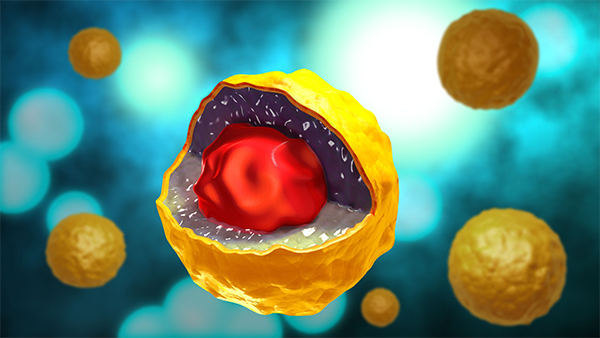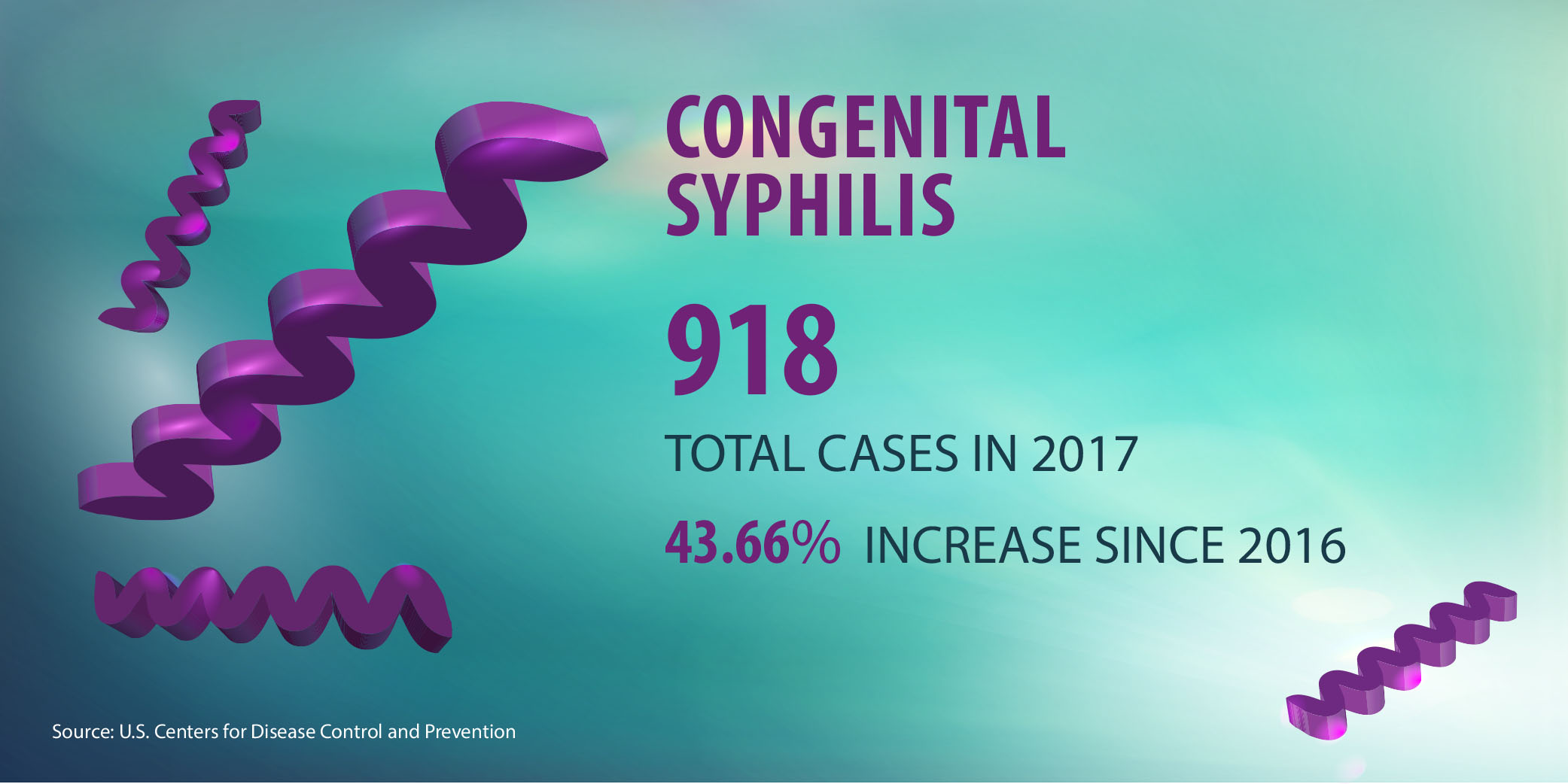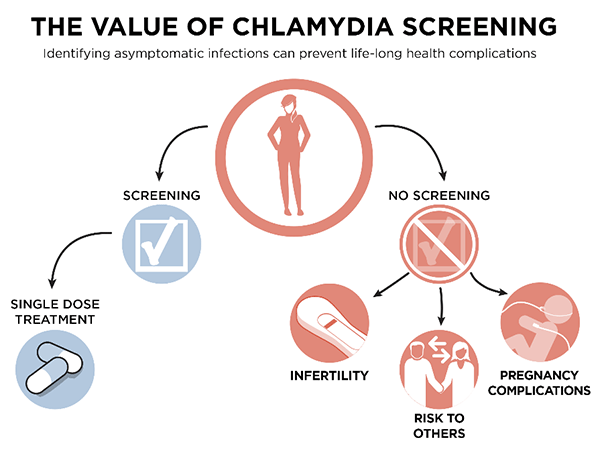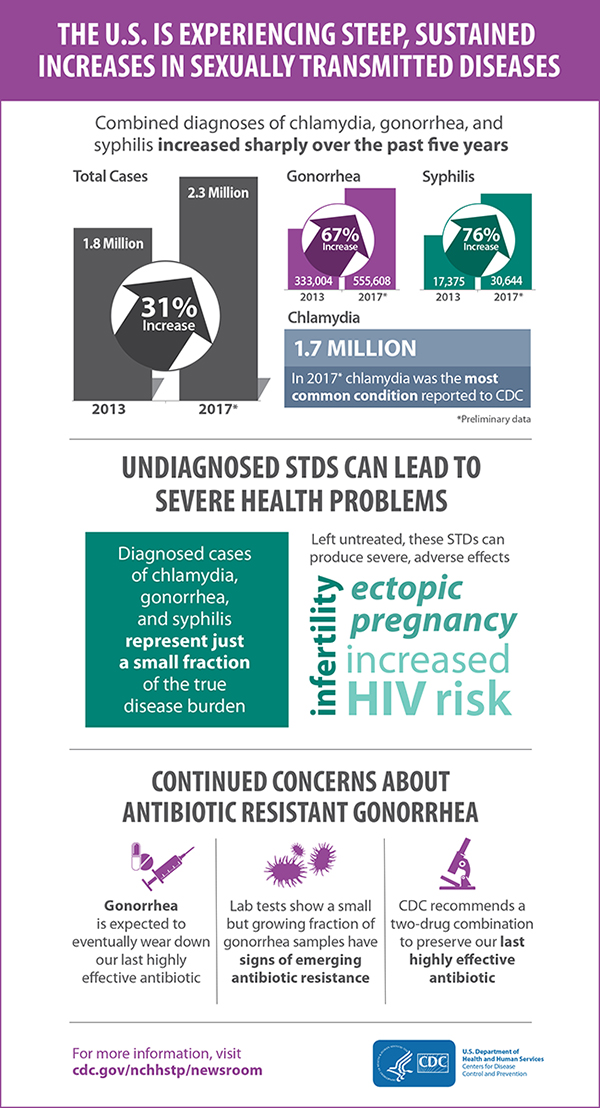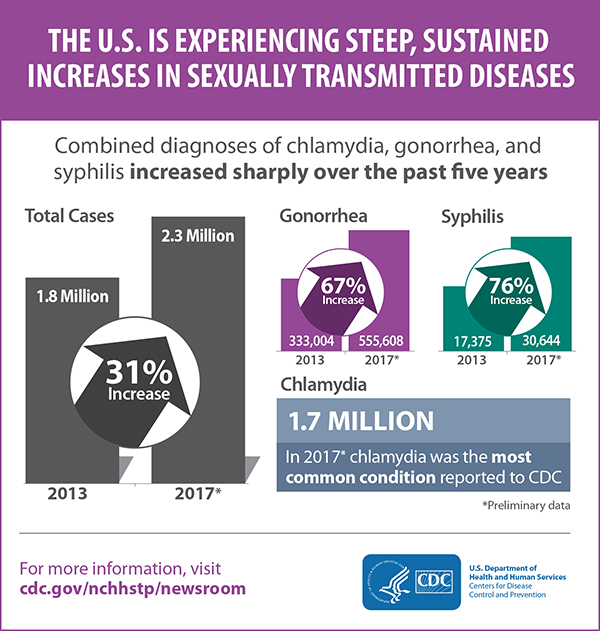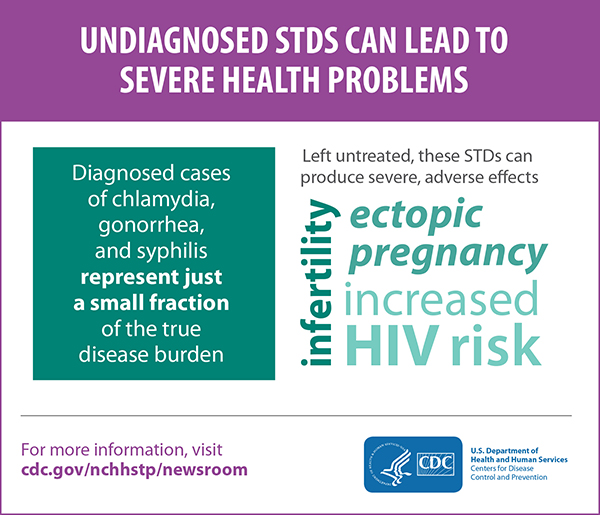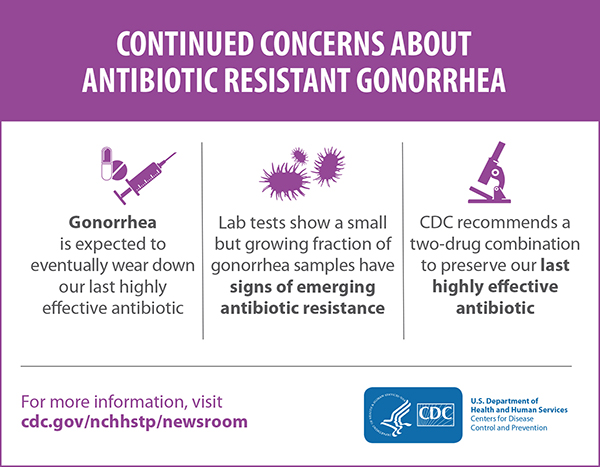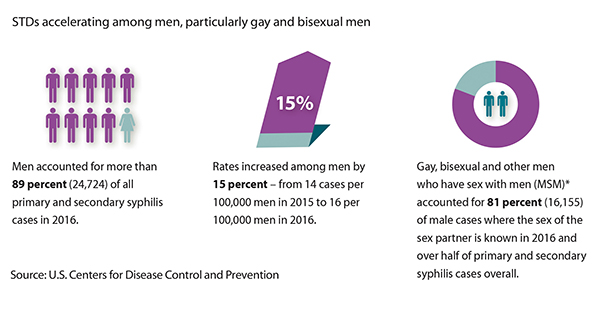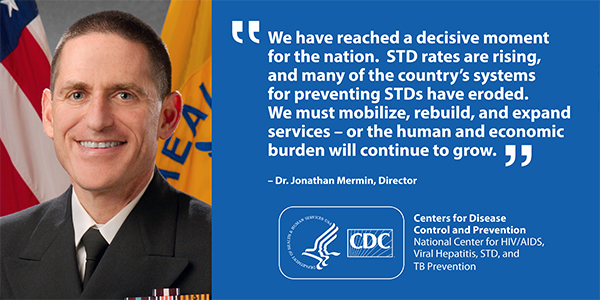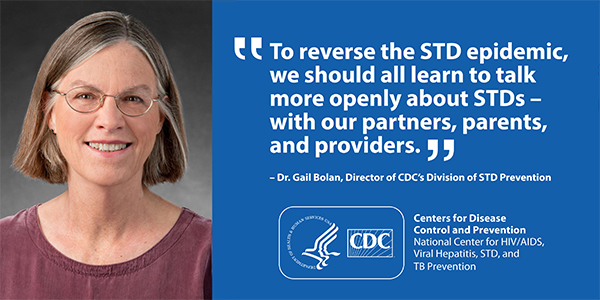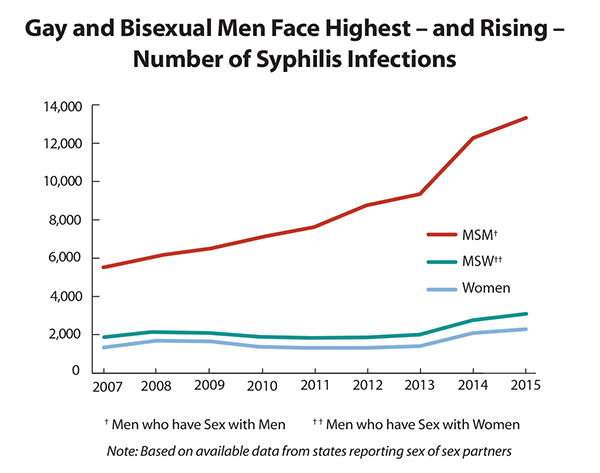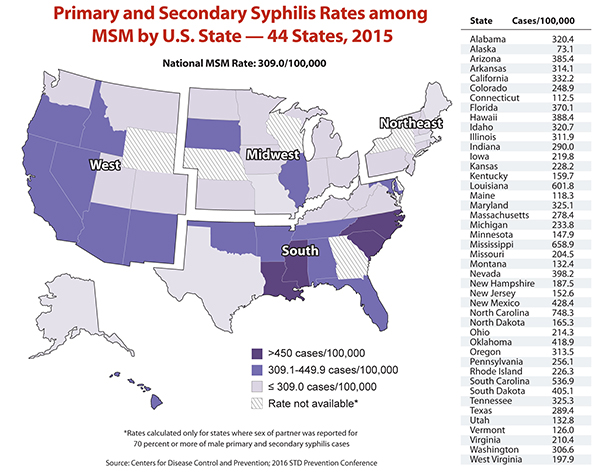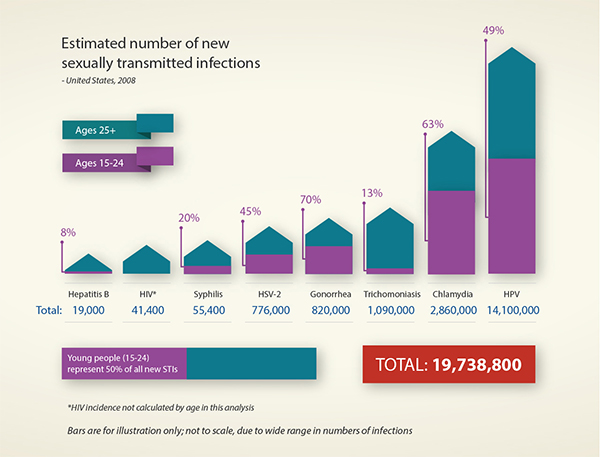STD Multimedia Resources
STDs Multimedia Resources
On This Page
Below are multimedia resources for news media outlets. Please feel free to pair your compelling messages with the available photos, videos, social media posts, infographics and data. These multimedia resources are in the public domain and are thus free of any copyright restrictions. As a matter of courtesy, we ask that the content provider be credited and notified of any public or private usage of an image. This page will be updated as new resources become available.
If you need more information about the data connected to the release, please click the more information button to find accompanying press releases, articles, and reports.
Commonly Requested Multimedia
Top of Page
2017 STD Surveillance Report: Congenital Syphilis Cases Reach 20 Year High – September 25, 2018
According to CDC’s annual STD Surveillance Report, cases of congenital syphilis more than doubled since 2013 (362 in 2013 to 918 in 2017), reaching a 20-year high and outpacing overall increases in STDs nationwide.
Top of Page
2018 STD Prevention Conference - August 28, 2018
CDC presented preliminary surveillance data (2017) at the 2018 STD Prevention Conference in Washington, D.C. It found recent increases STDs have continued for four consecutive years — and that the nearly 2.3 million cases of chlamydia, gonorrhea and syphilis reported to CDC for 2017 exceed the previous 2016 record by more than 200,000 cases.
Top of Page
CDC Data Released Today Show STD Diagnoses at Record High in U.S. – September 26, 2017
CDC data from the 2016 STD surveillance report show more than two million cases of chlamydia, gonorrhea and syphilis were reported in the United States in 2016, the highest number ever.
Top of Page
2015 STD Surveillance Report - Oct. 19, 2016
Data for three nationally reported STDs – chlamydia, gonorrhea, and syphilis – show unprecedented highs in 2015. CDC calls for expanded prevention efforts in light of these increases.
Audio
Below are audio clips featuring NCHHSTP Director Jonathan Mermin, MD, MPH and Division of STD Director Gail Bolan, MD. To save the audio clip, right click the audio player and select the “Save audio as…” option.
Dr. Jonathan Mermin on the nation’s decisive moment regarding STDs | View Transcript
Dr. Jonathan Mermin on the nation’s decisive moment regarding STDs
Dr. Jonathan Mermin on reversing the STD epidemics | View Transcript
Dr. Jonathan Mermin on reversing the STD epidemics
Dr. Gail Bolan on the importance of talking openly about STDs | View Transcript
Dr. Gail Bolan on the importance of talking openly about STDs
Dr. Gail Bolan on the devastating consequences of syphilis | View Transcript
Dr. Gail Bolan on the devastating consequences of syphilis
Top of Page
2016 STD Prevention Conference - September 22, 2016
Data (2015) presented at the conference reinforces that sexually active gay and bisexual men are at high risk for syphilis – and that syphilis affects gay and bisexual men in some parts of the country more than others.
Top of Page
STDs Among Youth
Half of the estimated 20 million sexually transmitted infections (STIs) that occur each year in the United States occur among young adults ages 15-24. The following graphics can help inform your stories on this important topic.
Top of Page
Multimedia Archive
- Page last reviewed: September 26, 2017
- Page last updated: September 25, 2018
- Content source:


 ShareCompartir
ShareCompartir




